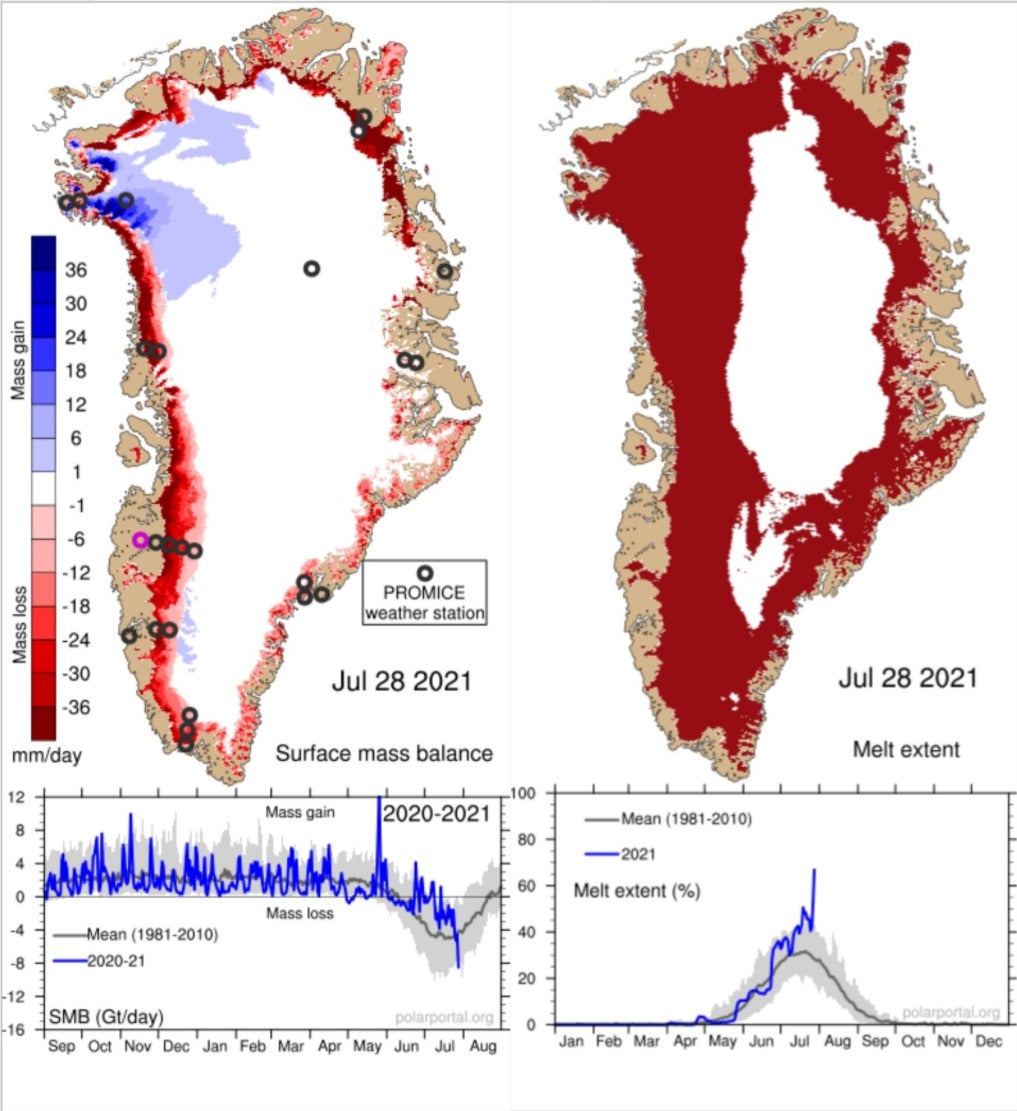Amount of ice which melted from Greenland on Tuesday ‘would cover Florida in two inches of water’
Greenland ice sheet contains enough water to raise global sea level by seven metres
Your support helps us to tell the story
From reproductive rights to climate change to Big Tech, The Independent is on the ground when the story is developing. Whether it's investigating the financials of Elon Musk's pro-Trump PAC or producing our latest documentary, 'The A Word', which shines a light on the American women fighting for reproductive rights, we know how important it is to parse out the facts from the messaging.
At such a critical moment in US history, we need reporters on the ground. Your donation allows us to keep sending journalists to speak to both sides of the story.
The Independent is trusted by Americans across the entire political spectrum. And unlike many other quality news outlets, we choose not to lock Americans out of our reporting and analysis with paywalls. We believe quality journalism should be available to everyone, paid for by those who can afford it.
Your support makes all the difference.Scientists claim the ice that melted from Greenland on Tuesday would be enough to cover the US state of Florida in two inches of water.
Ice sheets on the autonomous Danish territory are shrinking as temperatures in the Arctic reach record levels.
While the number of gigatons lost is not as extreme as in 2019, a record melt year, the overall area of the ice sheet that is shedding mass is actually larger, according to Polar Portal, an umbrella organisation of Danish Arctic research institutions studying Greenland’s ice.
It described a "massive melting event in Greenland” that “would be enough to cover Florida with two inches of water".
The Greenland ice sheet contains enough water to raise the global sea level by seven metres, a change that would displace millions of people, according to a study by IMBIE, an international collaboration of polar scientists.
In May, scientists warned that part of the Greenland ice sheet could soon cross the point of no-return after which the rate of melting outpaces the rate of snowfall.
Researchers analysing Arctic data said the situation could soon reach a “tipping point” and warned that they “urgently” need to understand how each effect of melting affects the others.
Losing the ice sheet is expected to add to global warming and disrupt major ocean currents, monsoon belts, rainforests, wind systems, and rain patterns around the world.
An ice sheet can only maintain its size if the loss of mass from melting and calving glaciers is replaced by snow falling onto its surface.

The warming of the Arctic disturbs this mass balance because the snow at the surface often melts away in the warmer summers.
Melting will mostly increase at the lower altitudes, but overall, the ice sheet will shrink from a mass imbalance.
As this happens, a positive feedback mechanism kicks in – meaning as the ice sheet surface lowers, its surface is exposed to higher average temperatures, leading to more melting and the process repeats until the entire ice sheet is gone.
Beyond a critical threshold, researchers say, this process cannot be reversed because, with reduced height, a much colder climate would be needed for the ice sheet to regain its original size.

Join our commenting forum
Join thought-provoking conversations, follow other Independent readers and see their replies
Comments